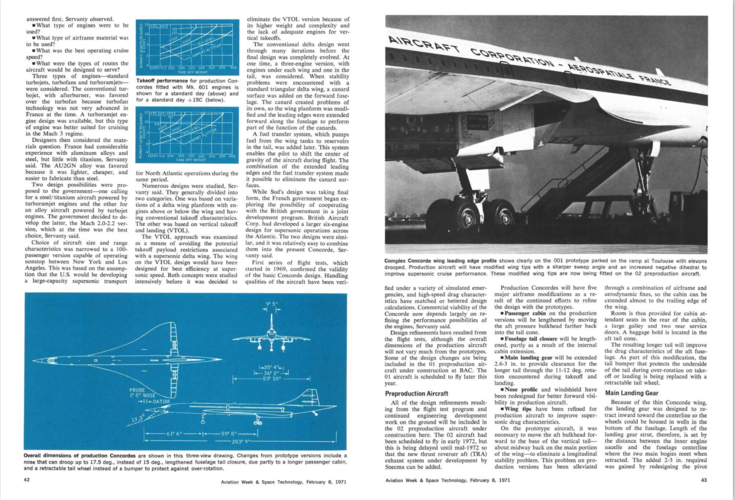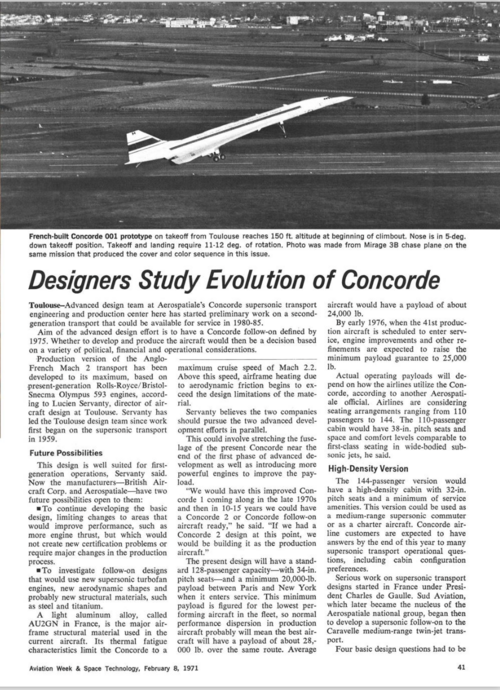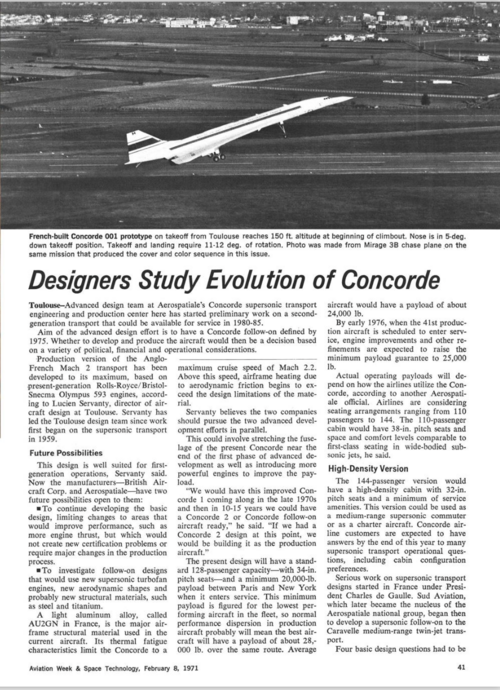There
https://www.secretprojects.co.uk/th...ment-variants-projects.728/page-5#post-652041
Honestly, I think the Boeing 2707 had about the right size for passenger hauling, ~300 passengers and roughly 747 weight, 3500nmi range. No good way to improve range, though.
There is a good reason why they picked Mach 2.7
Long story short: transatlantic crossings (New York to Paris / London) in
two hours rather than Concorde's
three hours.
End result: additional crossings per day, hence: better ROI.
Starting from 6 in the morning Concorde could only make two roundtrips per day (3 hours, 1 hour stop, 3 hours again:
7 hours)
6 - 13 - 20
Cutting the crossing time from three to two hours,
total 5 hours, starting from 6 in the morning:
6 - 11 - 16 - 22
And with 250 passengers instead of a paltry 140, the SST economic case closes - if barely.
As proven by Concorde, on transatlantic flights the range and sonic boom issues are manageable.
At the end of the day
-Constellation --12 hours one way: so 0.5 roundtrip per day
-747: -------------6 hours one way, so 1 roundtrip per day
-Concorde: ------3 hours one way, so 2 roundtrips a day
-Boeing SST: ----2 hours one way, so 3 roundtrips a day
"roundtrip" = New York to Europe and back.



